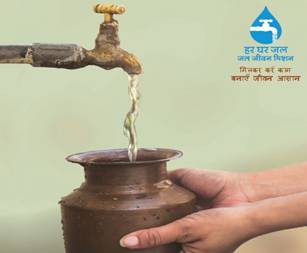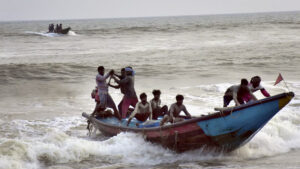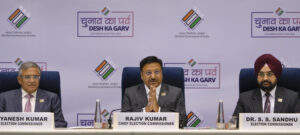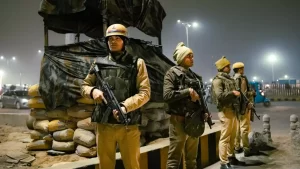Karnataka Plans To Provide 25 Lakh Tap Connections By March, 2022

New Delhi, 19 April (HS): Karnataka State presented their Annual Action Plan under Jal Jeevan Mission today via video conference with details of the State’s action plan for the year 2021-22 as well as saturation plan for the whole State, thereby ensuring every rural household getstap water connection. In 2021-22, the State plans to provide 25 lakh tap water connections in rural areas of the State.
Karnataka State has 91.19 lakh rural households, out of which only 28.44 lakh (31.2%) have tap water supply. So far, 23 Panchayats and 676 villages in the State have been declared ‘Har Ghar Jal’, which means every rural household tap water supply. It is a big move to empower the community as it not just provides ‘ease of living’ to the women and young girls, who are primarily the water managers in every household but also gives them time to pursue education, learn different vocations, upgrade their skill and spend time with the family which was otherwise used to travel long distances in search of water.
As many as 95% Schools and 95% Anganwadi Centres, 84% Ashramshalas, 91% Gram Panchayat buildings and 92% Health Centres have piped water connections in Karnataka. The State plans to cover the learning centres, GP building and Health centres in next few months. There is urgent need for grey water management and behaviour change among people so that water, which is a limited resource, is used judiciously. The state plans to cover 17,111 villages falling under the priority category i.e. drought prone and desert region, SC/ ST dominated habitations, Aspirational districts, etc. in the current financial year.
The national committee analyzed and advised on the Plan presented by the State. The State was urged to gear up and make concerted efforts to not just complete the task from last year but also fast-track the work planned for the current year. In 2021-22, out of 30 districts in Karnataka, the State plans for complete saturation of 2 districts ensuring 100% tap water connections to rural households. The committee emphasized the need to test the water supplied in not just the household but also in schools and anganwadi centres.
To ensure transparency and accountability, a robust Grievance redressal mechanism has been developed by the State of Karnataka called ‘Bhoomi online – Parihara. It provides quick and easy mechanism of grievance redressal related to drinking water supply also on daily basis.
JJM is a flagship programme of the Union Government, which aims to provide piped potable water to every rural household. In the previous financial year 2020-21, Rs 1,189 Crore Central fund was allocated for the State to provide assured tap water supply in every rural household. In the current financial year 2021-22 the State has been allies likely to receive Central funds to the tune of Rs 3,000 Crore, for which the State needs to have a proper plan for effective utilization of the funds to make provision of household tap water connection in villages.
The Annual Action Plan in detail covers plan for drinking water source strengthening/ augmentation, water supply, grey water treatment & reuse, and operation & maintenance of in-village water supply systems, IEC planning, support activities like water quality monitoring and surveillance, training, etc. The State is planning for intense skill training of 14,000 rural people as masons, plumbers, electricians, motor mechanics, fitter, pump operators in 2021-22. It means that skilled human resources to be created in the villages, which will be helpful in building water infrastructure.
The month-long exercise of taking up the Annual Action Plan (AAP) of States/ UTs under Jal Jeevan Mission, is done by a committee chaired by Secretary, Department of Drinking Water & Sanitation, Ministry of Jal Shakti, members from different Central Ministries/ Departments and NITI Aayog to do a rigorous scrutiny of the proposed AAP. Thereafter, funds are released throughout the year coupled with regular field visits by the national team and frequent review meetings are held to guide and provide technical assistance to ensure smooth implementation of the mission and help achieve the goal of ‘Har Ghar Jal’.
In 2021-22, in addition to Rs. 50,011 Crore budgetary allocation for Jal Jeevan Mission, there is also Rs. 26,940 Crore assured fund available under the 15th Finance Commission tied-grant to RLB/ PRIs for water & sanitation, matching State share and externally aided as well as State funded projects. Thus, in 2021-22, more than Rs. 1 lakh Crore is planned to be invested in the country on ensuring tap water supply to rural homes. This kind of investment in rural areas will boost the rural economy.
Under Jal Jeevan Mission,preparation of Village Action Plan (VAP) and constitution of Village Water & Sanitation Committee for every village is of utmost importance, so that they are not only the key stakeholder in planning, implementation of the water supply schemes in the village, but also in the long-run the villagers are empowered to operate and maintain the water supply infrastructure created under the ‘Har Ghar Jal’ programme.Efforts are made to dovetail all available resources by convergence of different programmes viz. MGNREGS, SBM, 15th Finance Commission Grants to PRIs, CAMPA funds, Local Area Development Funds, etc. The State has to involve the local village community/ Gram Panchayats and or user groups in planning, implementation, management, operation and maintenance of water supply systems in villages to ensure long-term sustainability thereby help achieve drinking water security. The State was urged to start IEC campaign through community engagement in all villages.
Under Jal Jeevan Mission, water quality testing laboratories at district & state levels are given priority and are opened for general public so that they can test their water at nominal rate. Community is being encouraged for surveillance of water quality. PHE Department is facilitating to empower and engage with the community. For this, an action plan is carried out to incorporate the various planned activities like timely procurement of field test kits, timely supply of kits to the community, identification of at least five women in every village for community engagement, training women on how to use the Field Test Kits and reporting and collating the reports with laboratory-based findings of the water sources.






